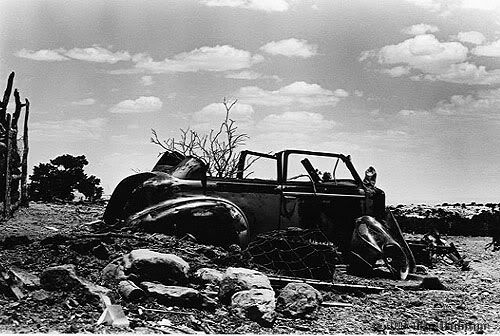End of the Road
 You’ve clawed your way though 350 pages of pretty good storytelling, if you do say so yourself. You’ve paid attention to conflicts, listened to your characters, gave them witty dialogue. Now looms the ending. Except you don’t know how you want your story to end.
You’ve clawed your way though 350 pages of pretty good storytelling, if you do say so yourself. You’ve paid attention to conflicts, listened to your characters, gave them witty dialogue. Now looms the ending. Except you don’t know how you want your story to end.It’s a common problem. When we start our stories, were pretty careful to plot it all out, or if you’re a pantser at least work up a rudimentary outline. Funny thing about best-laid plans, though.
Stories mutate in the telling of them. And if you’re like me, the plot outline you started with resembles nothing of the finished product.
Still. You’ve got to end it. But how?
I turn to the experts when I feel my blood pressure rising and panic setting in.
In this instance, I’ve turned to James N. Frey, author of HOW TO WRITE A DAMN GOOD NOVEL, because, like a good how-to writer, he keeps things simple. Simple is all I can handle now.
Oh thank god. Page 86. He reminds writers that stories are about struggle driving to a climax. After the climax (which should prove the premise of the novel) comes the resolution. The two should not be confused. So far so good.
What makes a great climax?
Desperately thumbing . . .
1. Look for surprises
2. Exploit emotion
Hmm, a tight story would do both, I muse. Frey uses the example of Dicken’s Christmas Carol. Scrooge is shown his own grave. This appears to be his fate. Surprise: it was all a dream! He’s alive! Reader is bowled over by the reversal AND the emotion it generates. That Dickens, some kind of genius. The father of a millon deus ex machina endings and soap opera plots. But I'm not proud right now.
Page 95. Frey writes that a good climax should “issue a verdict in the court of poetic justice.” Ex: a protagonist who craves wealth and power gets the opposite. Unrivaled hubris leads to failure. Noted.
"Find new facets of character.” Even I have that basic level of storytelling understanding. I’ve already embedded character growth in the story. I begin to breathe easier.
“The climax-resolution should make the novel whole.”
Frey points out that it’s not enough to resolve the core conflict, secondary characters, periphery conflicts must also be resolve as well. Not all of them should be neatly resolved, but the reader should have the questions answered in part.
Tightness eases in my chest. I begin to relax. Thanks to Frey, I think I see a way out of my box. I think I’m going to be ok.

 posted by Kathleen Bolton at
posted by Kathleen Bolton at 


3 Comments:
I do understand this problem! Even though I write romance where happy endings are expected, there's always the problem of how to get there. And then I still struggle to come up with the details of the ending scenes: how best to make them emotionally satisfying without getting too long-winded.
Part of it may be a reluctance to give up being with characters I've come to love (and perhaps hate a little) along the way. Mostly it's knowing how important it is to have a satisfying ending.
One thing I've done is write quick and dirty drafts of various possibilities to see what feels right. I usually have to do it wrong to figure out what I should have done in the first place.
I wish it would get easier sometime, but I doubt it ever will!
Good advice! I think it's doubly hard in genre fiction, where there are certain expectations that need to be met--like the happy ending. It has to be honest and satisfying, and not feel tacked on.
Hopefully I'll have some hair left by the time I get there.
A random thought, redchurch, don't know if it might help.
The Hero's Journey model includes several climaxes, an Ordeal (a big test or turning point which happens somewhere around the middle of the story) and a Resurrection (aka the final Black Moment and its resolution).
Maybe you need an Ordeal somewhere in the middle of your story. We know all about ordeals, right? :)
Post a Comment
<< Home